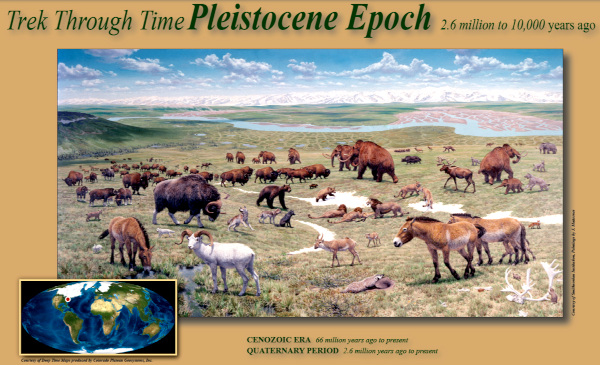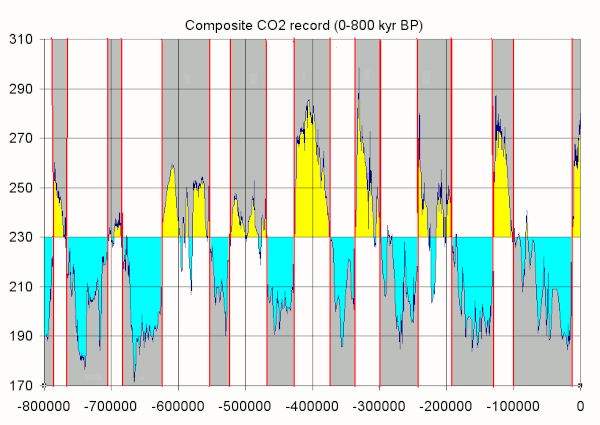

The term "ice age" often is used in two different ways. Sometimes it refers to a period in Earth's history when on numerous occasions the Earth got colder and ice sheets advanced from the poles, then later retreated as the Earth warmed up again. This ice age endured for millions of years. However, other times any one of the various glacial periods, which lasted only thousands of years, may be referred to as an ice age. Here, we're discussing the longer, inclusive ice age, the one more technically known as the Pleistocene epoch in the geological time scale.
The mantle of loess capping bluffs and hills along the eastern (downwind) side of the lower Mississippi River was deposited late during the Pleistocene. At the right, the red bar shows just how late it occurred -- at the very, very end.
Concepts of when the Pleistocene took place have shifted as more information has been developed. As of 2021, current consensus is that it endured from about 2.6 million to 11,700 years ago. That's slightly different from what's indicated in the above older USGS graphic.
Until fairly recently, the Pleistocene was said to comprise four major glacial periods. In North America those glacial events were referred to, from earliest to latest, as the Nebraskan, Kansan, Illinoian and Wisconsinan, though in Europe different names were used. The loess atop our bluffs and hills was said to have been deposited during the latter part of the Wisconsinan. The Wisconsinan was understood to have lasted from about 75,000 to 11,000 years ago.
 Ice ages as reflected in atmospheric CO2, stored in bubbles from glacial ice of Antarctica; public domain image courtesy of Tom Ruen & Wikimedia Commons
Ice ages as reflected in atmospheric CO2, stored in bubbles from glacial ice of Antarctica; public domain image courtesy of Tom Ruen & Wikimedia CommonsReflected in the graph at the left, nowadays it's recognized that during the Pleistocene more than 11 major glacial events are to be recognized, as well as many minor ones. The earlier concept of "four major glaciations" makes little sense, and there's even less reason to continue using the names Nebraskan, Kansan, Illinoian and Wisconsinan.
Geologists have divided the last glacial epoch into subdivisions, each with its own name. Carbon-14 (14C) dating correlates loess in the lower Mississippi Valley with a loess type known as Peoria Loess. In some places in our area, an older loess, named Farmdale Loess, lies beneath the Peoria. Farmdale is older than about 22,000 years. There may be even earlier loess units in our area, but they haven't been clearly identified. According to the 1960s Millsaps College team headed by J.O Snowden, Jr. and Richard R. Priddy, most Mississippi-loess deposits are more than 90% Peoria loess.
It's easy to believe that weather in the Lower Mississippi Valley was much different when our loess was being deposited at the end of the last glacial epoch. Fossils of an impressive number of prehistoric animal species have been found beneath the loess in and around Natchez, Mississippi, and other places. You can view a number of such fossil remains on our Fossils Page.